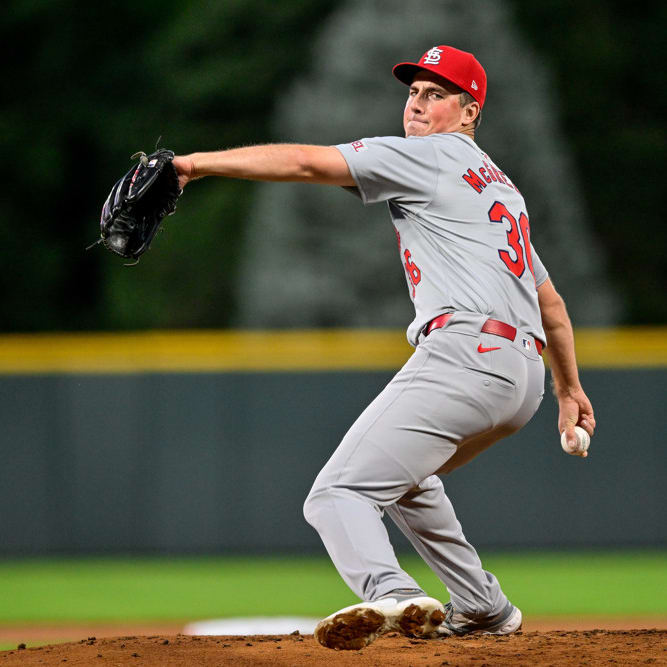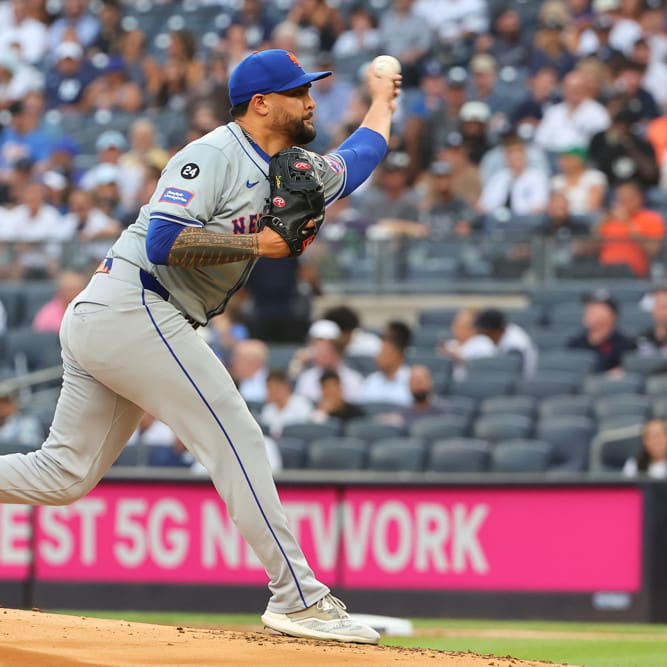This article is part of our Baseball Draft Kit series.
The more compelling issue is what to do with this information. It should be obvious that our standards in terms of what we need to compete are changing. Consider the Main Event in the NFBC. The Main Event consists of 15-team mixed leagues, with an overall contest consisting of 30-plus leagues. Because of the overall prize and the no-trade rule in the league, typically one needs to do well in every category, and punting a category isn't an option. While there's some room to be stronger in one category and weaker another, typically you need to average a position in the 70th percentile per category to cash in your
The more compelling issue is what to do with this information. It should be obvious that our standards in terms of what we need to compete are changing. Consider the Main Event in the NFBC. The Main Event consists of 15-team mixed leagues, with an overall contest consisting of 30-plus leagues. Because of the overall prize and the no-trade rule in the league, typically one needs to do well in every category, and punting a category isn't an option. While there's some room to be stronger in one category and weaker another, typically you need to average a position in the 70th percentile per category to cash in your league, and above the 80th percentile to cash in the overall contest. With that, here are home-run totals for the 70th and 80th percentiles, plus the overall contest leader from the last six seasons.
| Year | 70th | 80th | Leader |
|---|---|---|---|
| 2012 | 263 | 272 | 329 |
| 2013 | 244 | 251 | 310 |
| 2014 | 228 | 237 | 292 |
| 2015 | 257 | 264 | 307 |
| 2016 | 298 | 309 | 355 |
| 2017 | 321 | 328 | 390 |
It's just not possible to get enough homers from your team in today's game. The power surge began over the last two months of the 2015 season, after homers fell to only 0.86 per game in the majors in 2014. With that late 2015 surge, the major league rate was up to 1.01 per game. The NFBC Main Event leader that season had 307 homers -- which barely would have put him in the 50th percentile last year.
What does it take for you to get into a competitive place in homers? Consider that we have 14 active hitter slots. To get to a target of 325 homers, you need to average 23 homers per offensive roster slot! We used to speak of a corner infielder getting 15-to-20 homers as someone who would "not hurt you" in that category. Guess what -- that same player will hurt you there now, unless you make up for it elsewhere. Do you want to own Billy Hamilton to corner the market on stolen bases? Great! Just make sure you find a 40-homer player to compensate for the 2-4 homers that Hamilton will hit. I'm sure you'll find him in your second catcher slot.
That's not to say cheap power wasn't available last year -- it was, and not just in 20-25 homer chunks. Aaron Judge's ADP in the NFBC was Pick 349. Joey Gallo was at 436. Cody Bellinger was 445, Logan Morrison 517 and Justin Smoak was at 541. That's five of the top 11 home-run hitters available after Pick 300, in leagues populated by the most prepared pool of drafters one can find. That sort of free loot among the league leaders is an outlier, however. In 2016, Chris Carter was the lone top-10 basher drafted after the 300th pick, with two more (Mike Napoli and Adam Duvall) in the top 22. Moreover, all three of Carter, Napoli and Duvall were batting average sinkholes. In 2015, the only such windfall guy in the top-20 was Alex Rodriguez, who hit 33 homers after being suspended for the 2014 season.
The subject of category targets can be controversial. For starters, their underpinning is based on projections, which are notoriously volatile -- even ours here at RotoWire! Not only does player performance vary from year-to-year, but many players are going to get hurt and not reach their full projection. So if your draft tool suggests that you've already hit your category target, it's a mistake to stop acquiring more of that category in your draft. Moreover, your targets might not be sufficient -- that was clearly true the last two seasons in the home runs category. Even still, using those targets can be pretty valuable in demonstrating when you're short on a category. That's especially true in an auction, when you have less time to plan your next pick and have to make a bid on the fly. I'd highly recommend setting 80th percentile targets from your league to ensure you get enough of each category. If you're going to purposefully go low in a category, I wouldn't make it homers -- there's too much correlation with RBI and runs scored to make it work.
First Things First
Often when a player qualifies at first base and a secondary position, you'll most often slot him at the other position, given the depth at first base. That might not be the case this season, however. The top of the position remains strong -- Paul Goldschmidt, Cody Bellinger, Freddie Freeman, Joey Votto and Anthony Rizzo are comfortably in the top two rounds of most leagues, and the next tier of Edwin Encarnacion, Rhys Hoskins and Jose Abreu aren't far behind. Of those top-eight first basemen, Bellinger and Hoskins are also outfield-eligible, and Hoskins will see most of his time in the outfield this year following the signing of Carlos Santana.
It gets a little more volatile at the position after that. Eric Hosmer is coming off his best season, but still hadn't signed at press time in January, with his two most active suitors being the Padres and the Royals. He's also a groundball machine that is unlikely to produce greater than average power. Wil Myers was a 30-homer, 20-steal hitter last year, but at the cost of a .243 average. Eric Thames (who is also outfield-eligible) had a gnarly platoon split and faded over the second half last season. Ryan Zimmerman was outstanding last year, but hadn't played more than 115 games or hit more than 16 homers in any of his previous three seasons. It's the nature of the game that as you progress later in the draft, the players become more volatile, but usually there's more safety at first base. You might just end up keeping Bellinger and/or Hoskins at first base or corner infield this season.
Stolen Bases
Stolen-base attempts are at an all-time low in the modern era. There were 2,527 stolen bases in Major League Baseball last year, which translates to 0.52 for every MLB game. Prospective runners were caught 0.19 times per game, the lowest such rate since there were just 16 teams in the league. Almost every team has a growing analytics department that is gaining influence with their respective organizations, and the prevailing wisdom has been that an unsuccessful stolen-base attempt is more damaging than a successful attempt is helpful. Thus there are fewer marginal players running, and the times in which a player can run are scrutinized more closely. Additionally, we've demonstrated that power is up significantly -- there's less reason to run when so much offense is being generated by the long ball. Hence, there are fewer attempts across the board.
Going back to our NFBC Main Event example for a fantasy perspective, one needed 142 stolen bases on their team to reach the 80th percentile in the category. That's roughly 10 stolen bases per active roster spot, but since catchers rarely run, we really need 12 from the remaining spots. We've already established how difficult it is to compete in homers, particularly if you have a player that doesn't hit for power in your lineup. That doesn't mean you should avoid players like Dee Gordon and Billy Hamilton, but if you go the route of getting them, you're still not done acquiring speed, yet you still have to make up ground in power.
I'd recommend really getting to know the power-speed combination players. We'll break them down into three categories (HR-SB) -- 20-20 players, 30-10 players and 10-30 players.
20-20 Batters
Jose Altuve
Mike Trout
Mookie Betts
Paul Goldschmidt
Tommy Pham
Wil Myers
30-10 Batters
Charlie Blackmon
Brian Dozier
Rougned Odor
Domingo Santana
Justin Upton
Bryce Harper
Cody Bellinger
10-30 Batters
Trea Turner
Starling Marte
Jonathan Villar
A.J. Pollock
Jean Segura
When looking at these lists, keep in mind a couple of issues. The endpoints are somewhat arbitrary -- multiples of 10, rather than ones tied to your standings -- so a 21/19 guy is just as valuable as a 20-20 guy. And yet, we need to set endpoints somewhere to define our list. You should also note that none of these players will come cheaply, aside from maybe Villar, depending on his projected playing time this spring. Moreover, only Pham and Bellinger were cheaply acquired last season.
When cobbling together your draft strategy, make sure to have that power-speed balance in mind early on, as it will be difficult to "catch up" in one category without hurting the other. The less that your league allows for trading, the more important it will be to maintain this balance at the draft table.
This article appears in the 2018 RotoWire Fantasy Baseball Guide. You can order a copy here.










